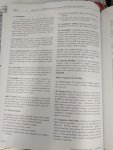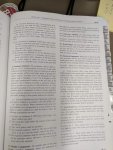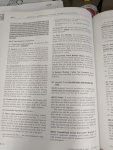I've been doing lots of searching and have now become a crazy man about my pool not being bonded. I am a new father and i want to make sure the pool is safe when she can finally use it. I thought i was fine, and the pool was bonded when i saw a copper wire covered in green sheathing attached to the ladder anchors, then connected to the fence, and then i saw the same wire connected to the pump, and filter. Then i realized, the wire on the pump and filter go to a ground rod, and this isn't the same wire up by the pool. I also now know the bonding wire should be bare copper. When we bought the house 3 years ago i knew nothing about pools, had the pool inspected and the guy said everything was fine. We were told a permit was pulled for the pool during construction but never closed, and when they tried closing it (in 2014), they were told it was from to long ago, and it couldn't be closed out, and they had a letter form the town saying the town would never bother us about the pool. I obviously would have acted differently towards all of this if i knew what i know now, but its to late now and my problem to deal with.
Please let me know if these steps sound correct. The pool also has a flagstone stone patio all around it.
1)I plan to dig up around half the pool (is there minimum depth for bonding? Or do i need to run the bonding wire around the entire pool?
2) Ill make sure to attach a bonding wire to the light nitch, then drill out 4 sections on half the pool to connect the bonding wire to the rebar, it has to be in 4 spots correct?
3) I will then connect each metal ladder anchor, then to the fence (do i need to do both sides of the fence?), then down to the shed where the pool equipment is and attached it to the pump and the metal filter and just leave it all like that.
From what i read its just attaching everything together, the wire just starts in one spot and ends in another with everything in between being connected. i was reading something about the pool light J box, but not really sure where that comes into play, it looks like my j box for the light is right up against the house and those wires run into the house where the main panel is, and there is another larger box that then has wires that go to the electrical panel. My setup is really simple as i don't have heat or anything else for the pool. there is just one outlet ran to the shed where i have a basic plug in timer that the pump plugs into. If the light Niche, Conduit, and J box are all metal and connected, can i just bond from the Jbox, since the niche metal is touching the water and leads to the jbox, or will each need to be bonded seperately?
This is going to be a complete headache of a job for me. i just want to make sure i do it right the first time. What I'm scared to ask is if i really absolutely have to put down copper mesh 3 ft outside of the pool wall and connect those as well, and if so do those need to be attached to rebar points. this is an old 70's pool so I'm assuming there is no rebar that sticks outside of the cement wall. I currently have all the mortar joints out between the flagstone/slate, so its now or never to get all of this done. I have very little time besides the weekends, so i need to work diligently. I feel i might be acting a little crazy over this, the pool has never had an issue since the 70's.
Please let me know if these steps sound correct. The pool also has a flagstone stone patio all around it.
1)I plan to dig up around half the pool (is there minimum depth for bonding? Or do i need to run the bonding wire around the entire pool?
2) Ill make sure to attach a bonding wire to the light nitch, then drill out 4 sections on half the pool to connect the bonding wire to the rebar, it has to be in 4 spots correct?
3) I will then connect each metal ladder anchor, then to the fence (do i need to do both sides of the fence?), then down to the shed where the pool equipment is and attached it to the pump and the metal filter and just leave it all like that.
From what i read its just attaching everything together, the wire just starts in one spot and ends in another with everything in between being connected. i was reading something about the pool light J box, but not really sure where that comes into play, it looks like my j box for the light is right up against the house and those wires run into the house where the main panel is, and there is another larger box that then has wires that go to the electrical panel. My setup is really simple as i don't have heat or anything else for the pool. there is just one outlet ran to the shed where i have a basic plug in timer that the pump plugs into. If the light Niche, Conduit, and J box are all metal and connected, can i just bond from the Jbox, since the niche metal is touching the water and leads to the jbox, or will each need to be bonded seperately?
This is going to be a complete headache of a job for me. i just want to make sure i do it right the first time. What I'm scared to ask is if i really absolutely have to put down copper mesh 3 ft outside of the pool wall and connect those as well, and if so do those need to be attached to rebar points. this is an old 70's pool so I'm assuming there is no rebar that sticks outside of the cement wall. I currently have all the mortar joints out between the flagstone/slate, so its now or never to get all of this done. I have very little time besides the weekends, so i need to work diligently. I feel i might be acting a little crazy over this, the pool has never had an issue since the 70's.




